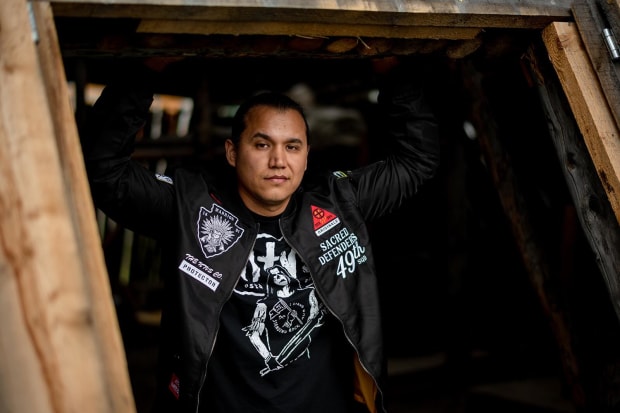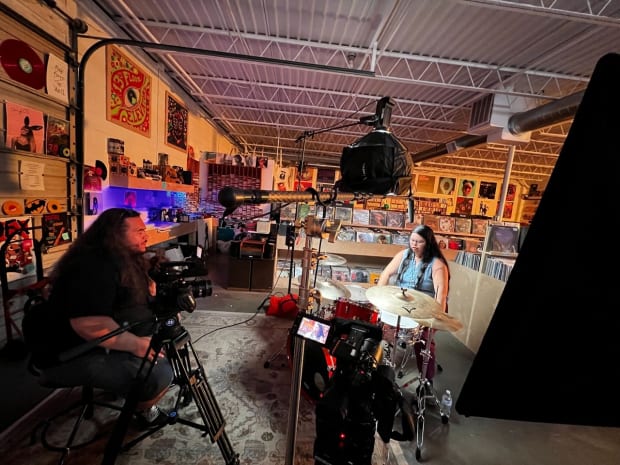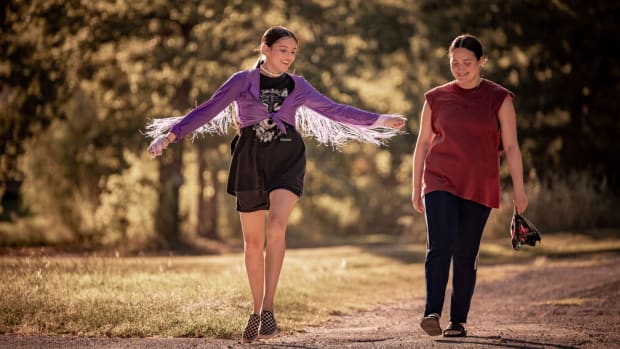How the recovery of a stolen plant helped one nation re-Indigenize tobacco
By Brian Bull
Mark Petrie knows tobacco. Both the good kind and the bad kind.
As a youngster, he witnessed commercially-processed tobacco with its additives and chemicals hook and ravage people in his family and tribe. Many believed they were practicing “tradition,” while nicotine and tar spurred addiction and ruined their lungs.
But outside the Coos, Lower Umpqua and Siuslaw Indians’ plankhouse in the coastal town of Coos Bay, Ore., the former tribal vice chair reverently holds a bulbous and gnarled strain called Nicotiana quadrivalis variety multivalis. Known more simply as Columbian tobacco, Petrie says this is the kind his distant ancestors raised, protected and used – well before the arrival of white settlers.
“When I started working for the tribe, I had the opportunity to work in commercial tobacco prevention,” Petrie said. “I really set my sights on looking for bringing back the traditional tobacco and how it was used.”
That was a tall order, given that Columbian tobacco practically disappeared from the banks of the Columbia River during the 1800s. The culprits were a Scottish botanist, the fur trade and the erosion of Indigenous protocols surrounding the plant.
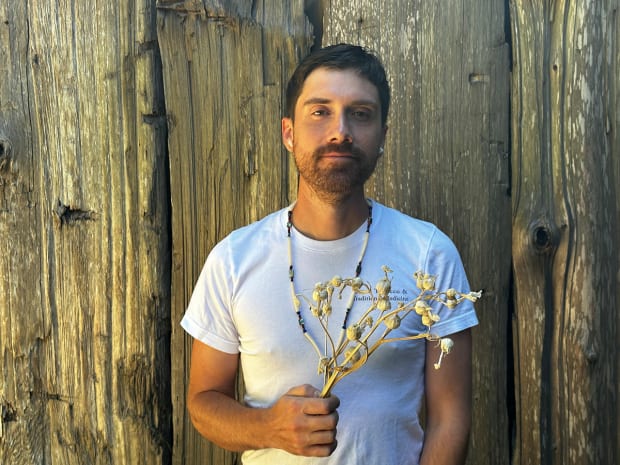
The bartering thief
David Douglas – namesake of the Douglas fir – ventured into what became known as the Pacific Northwest in 1825, scouring the terrain for new and interesting plant life to share with the Royal Horticultural Society. He found tribes growing Columbian tobacco next to their plankhouses. It was carefully cultivated and didn’t grow in the wild forests.
When he asked to take the plant’s seeds back with him, Native people rejected the request.
“And so he came by way of night and took some seeds,” Petrie said.
He was caught in the act. But some fast-talking and exchanging of other materials, including European tobacco, allowed him to get away with the seeds.
“He took them back to Europe,” Petrie said. “So that’s really the story of those plants we lost. We weren’t able to cultivate them and maintain the environment where they were growing, because we were displaced.”
Another Native person familiar with the practices of pre-colonial Indigenous tobacco is Robert Kentta, retired cultural director for the Confederated Tribes of Siletz Indians.
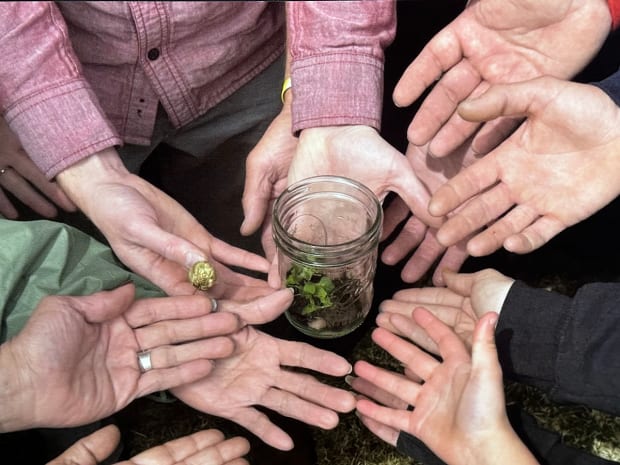
“There were real strong beliefs around if tobacco grew in the wrong place,” Kentta said. “There were strict protocols around where you grew it, how you used it, all of those things. Like if seeds sprouted from a tobacco offering in a cemetery, those things could be used as a poison.”
Throughout the 1800s, the fur trade saw Native Americans and European companies exchanging goods at a rampant pace. Of the many items the Hudson Bay Company brought into the continent that intrigued tribes, processed tobacco was among the most prized.
That appeal still confounds Kentta.
“It’s a little bit of a surprise that our elders picked it up that quick, because they had such protocols around tobacco,” Kentta said. “Trade tobacco did catch on, and it quickly replaced our traditional grown tobacco. People just kind of quit growing it.”
A Native tradition becomes Westernized…and weaponized
Over the following century and a half, the protocols and reverence for traditional tobacco dissipated like smoke. With commercially-processed tobacco supplanting both the Columbian and Indian (Nicotiana quadrivalvis variety quadrivalvis) varieties in the Native community, marketers were quick to target this demographic. One particularly influential brand is Natural American Spirit, which features a thunderbird, peace pipe, and Indian chief on its packaging. A 2021 study by the University of California-Merced showed Alaskan natives switched to the brand instead of quitting the habit, saying it was “healthy and natural.”
Generations later, this targeted marketing – as well as the propagation of the idea that all smoking is “traditional” – has paid off for tobacco manufacturers, though at a tremendous human cost. A long-term study by the Centers for Disease Control and Prevention showed higher rates of lung cancer in general for Native people, while the anti-smoking organization The Truth Initiative says nearly 23% of Native people smoke, compared to 13% of non-Natives. And 16% of Native American/Alaska Native high-schoolers smoke cigarettes – a rate nearly three times higher than average.
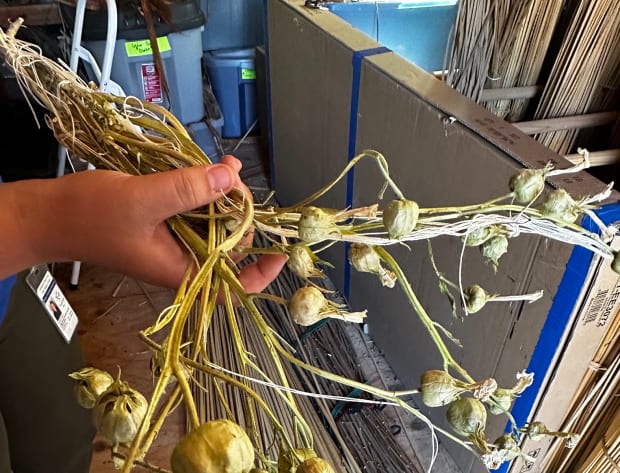
“I talk about that,” said Scott Kamala, a certified prevention specialist with the Confederated Tribes of Warm Springs.
While currently focused on underage drinking, his previous focus for 12 years was on educating his fellow Natives about the difference between authentic tobacco practices and modern-day smoking, as well as addiction and commercial tobacco products’ negative effects on the community.
“Back in the day I did a smoke-free powwow and it was just to protect people from secondhand smoke,” Kamala said. “A lot of people would stand by the door and smoke cigarettes, and lots of dancers and singers were complaining about that.”
Kamala says there’s also a sequel legend about about what happened after Adam and Eve disobeyed the Creator’s command not to disrespect the Garden of Eden.
“You ate this apple, you know what? You guys are gonna be kicked out of the garden, you’re gonna go down to Earth,” Kamala said. “Then the man (Adam) got scared, ‘Well, how do I know how to communicate with you?’”
That’s when the Creator introduced them to tobacco.
“You’ll roll this tobacco up, we’re gonna use it like a landline, a telephone. It’s going to communicate with me, so you’re going to be serious. It’s going to bring your prayers up to the Creator.”
Kamala wants that message to return.
“You know, Natives, we forgot about that teaching and we use it in a different way,” Kamala said. “That’s where people are suffering from lung cancer, skin cancer. Because we’re not following that teaching.”
From a theft, revival
On a bright afternoon, Nicole Romine walked into a greenhouse at the headquarters of the Coos, Lower Umpqua, and Siuslaw Indians. She knelt next to a small cluster of the distinctive, large-bulbed tobacco plants that David Douglas stole Native people near the Columbia River almost two hundred years ago.
“So this is the strain that made its way from the Columbia River Gorge all the way over to London, and then all the way to Pulaway, Poland,” she said.
Romine serves as CLUSI’s tribal tobacco prevention program assistant, a role she cherishes as that makes her the steward for the traditional tobacco variants.
“I’m gathering some of this tobacco, it’s just ready now,” Romine explained, gently running a finger alongside the nearly foot-high plant. “I left it a few weeks ago, there’s still some light green on the stem that will mold if we don’t let them dry out completely.”
Next to Romine is a plant with a handwritten name tag, indicating it will be gifted to a tribal member. For the tribe overall, just having this strain of tobacco back is a gift that required years of effort.
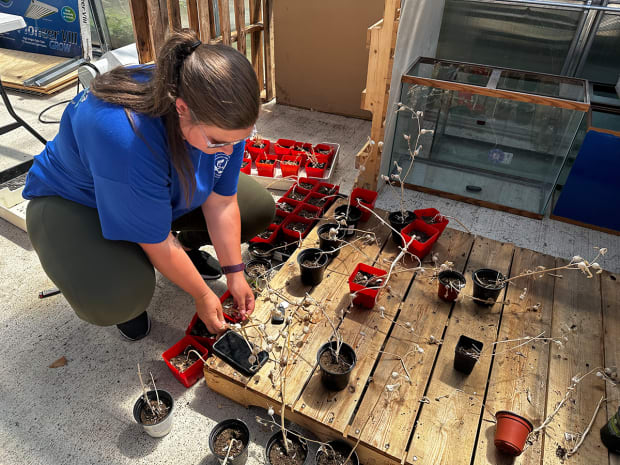
A CLUSI biologist, John Schaefer, managed to procure seeds for Indian tobacco from Thomas Jefferson’s Monticello plantation in Virginia back in 2006. But the real prize, Colombian tobacco, remained elusive. Inquiries were made at various seed banks and universities, but the chances of actually recovering seeds seemed meager.
Then in 2017, Schaefer heard from his contacts that there was a tobacco germplasm collection in Pulaway, Poland. That same year, a padded envelope arrived containing the long-awaited Columbian tobacco seeds.
They were perhaps the first ones back in the region – if not the entire U.S. – for generations.
“So these have been harvested and strung up,” Romine said, shaking a dried seed pod with a faint smile. “These will actually keep until we want to use them.”
Romine explained that when the tribe cultivated this strain, it resulted in larger pods that don’t open on their own. “So we have to go in and open the pods, for the seeds to spread. We’d go in and whack them, and disperse them ourselves.”
Giving back
In the six years since the Columbian tobacco seeds were sent from Poland, the tribe has actively grown and dried many plants. In May, CLUSI representatives gifted several to the other eight federally-recognized tribes within Oregon’s boundaries, and a few Native American organizations at the Sacred Tobacco and Traditional Medicine Gathering near Bend.
“At that event, we just really highlighted medicines, and talked about how those medicines bring healing into our communities,” said Petrie, who was among those presenting tobacco. “And sacred tobacco was one of those medicines.”
Altogether, there were 150 people at the event. Petrie recalls many were deeply appreciative to receive the tobacco.
“Having the ability to practice ceremony in ways that their ancestors have been practicing for so long, and with the plants that are special to our people,” Petrie said. “That was really wholesome to see and really brought good medicine to me.”
Organizers are planning another Sacred Tobacco and Traditional Medicine Gathering next summer in Grand Ronde. Petrie and Romine are dedicated to helping Native people reconnect with their special relationship with tobacco, and use it with the reverence and care they feel it deserves.
Authenticity returns to tribal ceremonies

Before my departure, the pair took me to a place on the Oregon Coast commonly known as Gregory Point. To area tribes, it’s called Baldich, and its history has seen Natives hiding from U.S. soldiers during the roundups and forced marches to reservations areas, as well as ceremonies.
“It’s a very sacred place for our people,” Romine said. She carried a jar of sacred Columbian tobacco, and gave a small blessing for this story amidst the crashing waves, keening gulls and cormorants.
Petrie explained that a salmon ceremony takes place here annually, where the remnants of a salmon feast are put back into the ocean. And part of that ceremony involves the offering of tobacco.
Now, the ceremony will include the pure, Indigenous tobacco of their ancestors, not a commercial brand filled with additives.
“We have been without the sacred tobacco for so long,” Petrie said, looking out beyond the craggy shoreline. “It brings a lot of happiness to our elders, myself and our families. We have that back with us.”

Our stories are worth telling. Our stories are worth sharing. Our stories are worth your support. Contribute $5 or $10 today to help ICT carry out its critical mission. Sign up for ICT’s free newsletter.
